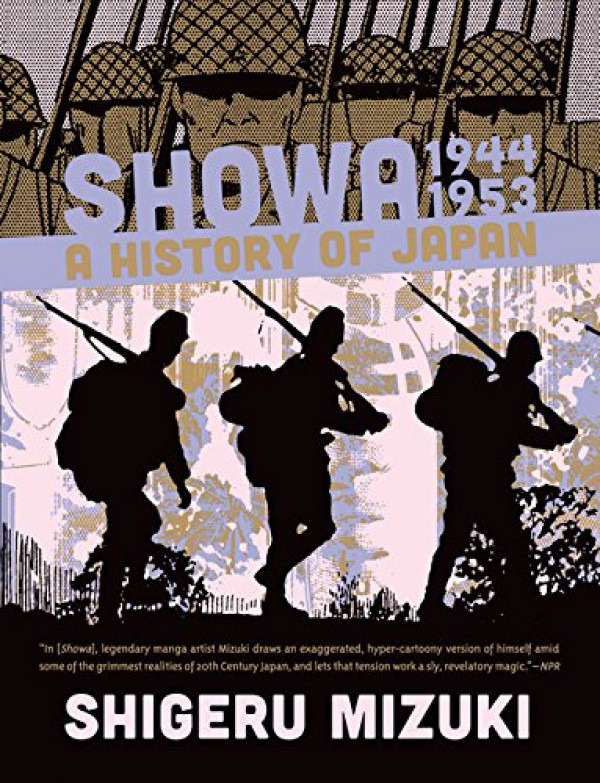By Shigeru Mizuki. Released in Japan as “Comic Shouwashi” by Kodansha. Released in North America by Drawn & Quarterly.
I was somewhat deceived by the cliffhanger in the last volume, where I felt that I’d gotten to the incident that caused Mizuki to lose his arm. In fact, it’s yet another breathtaking escape from the jaws of death, and the arm is lost much later in the narrative, when he lies delirious from malaria in the camp hospital. It’s fascinating how often he was nearly killed – indeed, it’s especially amazing given how often his squad was sent on suicide marches. He was the only survivor from his original squad, and this is looked upon as extremely shameful by the officers – why didn’t he die nobly? As ever, though, Mizuki seems not to think too hard about all of this, and is mostly concerned with food. At least, the Mizuki we read about here. The author knows very much what he’s saying in this volume, condemning the Japanese higher-ups for needless sacrifice.
The story continues to shift back and forth between Mizuki’s account of his own experiences during and after the war and the historical narrative being presented by Nezumi Otoko (who is briefly joined by two other yokai from the Kitaro series, possibly as Mizuki wanted to distract from some especially dry history). In the earlier volumes, I was more riveted by the history than I was my Mizuki’s biography, but here my interest began to shift, and I found myself wanting to learn more about this man and his determined survival traits, which again are consistently portrayed as being due to happenstance rather than any cunning or intelligence. Mizuki drifts through life during and after the war, and his creation of Kitaro – then known as Graveyard Kitaro – doesn’t even merit a panel, instead being framed as part of the larger narrative of his inability to succeed – Kamishibai, the style he’s trying, is on its way out, and manga is the brand new thing that may actually work out.
This is not to discount the history, of course, which remains excellent. Mizuki is very good at showing multiple sides of each situation, being sure to mention the heroic moments in the Pacific War along with the atrocities, and pointing out how the occupation post-War did help the economy recover (mostly due to the Korean War) while noting how hypocritical and unrelenting MacArthur and the GHQ could be in their promotion of democracy and search for communists. There’s a scene where the students are reading a book talking about the freedoms of Western capitalism which is heavily censored with black magic marker to remove references to Japanese patriotism. It helps to raise a generation of cynics.
As this volume ends, things are looking a little better for both Shigeru Mizuki and the people of Japan. The last volume, due out in the spring, will take us to 1989, the final year of Showa. I look forward to it greatly, but hope it will be a bit less harrowing than this one, which does not flinch in its portrayal of Japanese commanders sending their troops towards “noble deaths”, and one man’s ability to drift through life allowing him to survive that conflict – though not without sacrifice.

